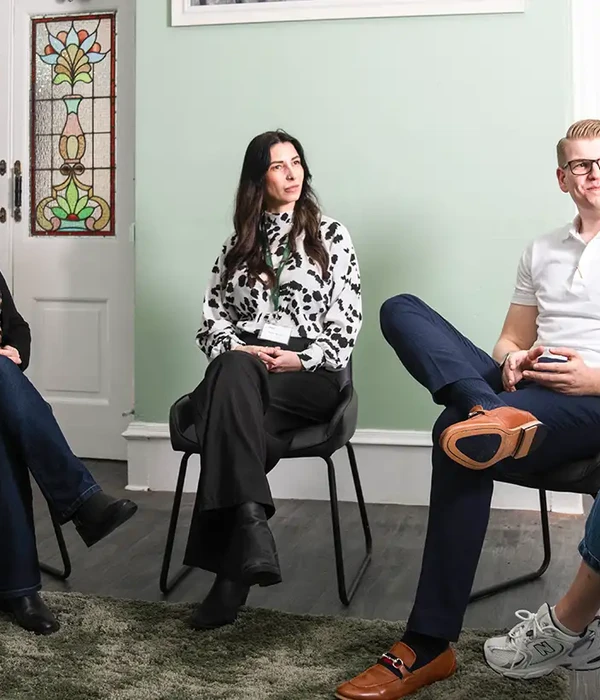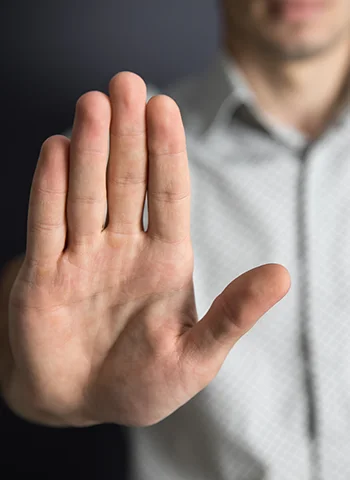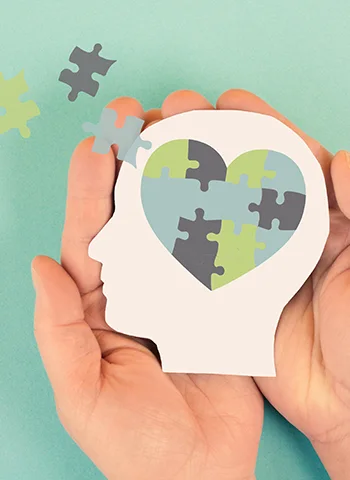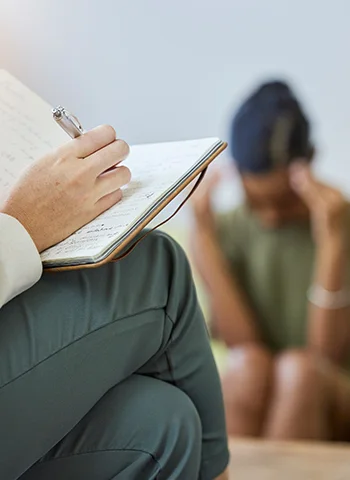Lorazepam Addiction Treatment
People are often prescribed lorazepam for anxiety or sleep problems, but it can quickly lead to addiction when used for too long or without medical direction. Effective lorazepam addiction treatment can help you regain control over your life and health.
Understanding different benzodiazepine addiction treatment options is important. With the right support, ranging from medically supervised detox to therapy and ongoing care, you can address both the physical withdrawal and the underlying reasons for dependence.

Take the First Step Towards Recovery
Steps Together offers personalised support and proven treatments, providing the care, guidance and encouragement you need to move forward with confidence and build a healthier future.

Understanding Lorazepam Addiction
Lorazepam, known by the brand name Ativan, is part of a class of drugs known as benzodiazepines, which are central nervous system depressants. It is often used to treat anxiety and sleep problems, but it carries a risk for substance abuse.
Lorazepam addiction happens when you cannot stop taking the drug, even when it causes harm. You may take more than prescribed or use it to feel normal. This kind of addiction is a type of substance use disorder that can develop if you use lorazepam for longer than your doctor recommends.
Why Is Lorazepam Addictive?
Lorazepam is addictive because of the way it works in your brain. As a benzodiazepine, it increases the effects of a chemical called GABA (gamma-aminobutyric acid). GABA slows down brain activity, which can make you feel calm and relaxed.
With regular use, your brain becomes used to having extra GABA activity. This can lead to tolerance, meaning you need a higher dose to feel the same effects. Over time, your brain starts to rely on lorazepam to function normally, which makes stopping the drug difficult.


Physical and Psychological Dependence
Dependence can be both physical and psychological. Physical dependence means your body has adapted to the presence of lorazepam. If you stop suddenly, you may experience withdrawal symptoms like anxiety, insomnia, sweating, shaking, or even seizures.
Psychological dependence is when you feel you need lorazepam to deal with daily life or certain situations. You might worry or panic if you cannot get your next dose. Both types of dependence make it hard to quit on your own.
Therapeutic Approaches in Lorazepam Addiction Treatment
Successful lorazepam addiction treatment requires a range of therapies that address both how you think and feel. These methods help you to build practical coping skills, handle cravings, and manage challenges in daily life.
Cognitive Behavioural Therapy
Cognitive Behavioural Therapy (CBT) is a common method used in lorazepam addiction treatment. It helps you spot unhealthy thinking patterns and behaviours connected to drug use. During CBT, you’ll learn how to challenge these thoughts and replace them with healthier choices.
CBT also focuses on teaching you better coping mechanisms for stress, anxiety, and triggers. Building these new skills can help reduce the chance of relapse. Some treatment centres offer CBT in combination with mindfulness or acceptance and commitment therapy for even better results.
Dialectical Behaviour Therapy
Dialectical Behaviour Therapy (DBT) is a branch of cognitive behavioural therapy. DBT is used when you may experience strong emotions or find it difficult to manage relationships during recovery. This therapy combines acceptance strategies, helping you acknowledge your thoughts and feelings, with change strategies to support healthy behaviours.
DBT teaches skills like mindfulness, emotion regulation, distress tolerance, and improving communication. These skills are valuable because they help reduce anxiety, manage mood swings, and prevent impulsive decisions. DBT is structured and usually delivered through both individual and group sessions.
Motivational Interviewing
Motivational Interviewing (MI) is a talking therapy that helps you strengthen your motivation to change. The therapist will not judge or lecture you. Instead, they ask questions and listen carefully to help you recognise the reasons for your use of lorazepam.
The main goal of MI is to guide you in finding your reasons and confidence to quit. MI is especially useful in the early stages of treatment when ambivalence or uncertainty is common. This approach is often paired with other therapies to help you set goals, track progress, and celebrate achievements.
Individual and Group Therapy
Therapy is a major component of lorazepam addiction treatment. Individual therapy gives you a private space to explore the root causes of your addiction, manage anxiety, and work on personal goals.
Group therapy allows you to connect with others facing similar challenges. This can be vital for people in recovery, as addiction can often isolate a person from their loved ones. These sessions can also be an opportunity for those in recovery to build a support system.
Other addiction treatment services our rehab centre offers

Withdrawal, Detoxification, and Medical Supervision
Stopping lorazepam after regular use can cause serious withdrawal problems, including physical and mental symptoms. Getting a safe lorazepam addiction treatment programme with medical supervision reduces dangerous risks and helps you manage withdrawal more comfortably.
Lorazepam detox can be both uncomfortable and dangerous due to withdrawal symptoms. You might experience anxiety, irritability, sleep problems, sweating, muscle pain, and nausea. Some people have shaking, headaches, or even confusion. Withdrawal symptoms often start within 24 hours of your last dose.
Medically Supervised Detoxification
A medically supervised detox is the safest way to manage lorazepam withdrawal. They may use a tapering plan, slowly lowering your dose instead of stopping suddenly. This reduces the chance of severe lorazepam withdrawal symptoms and seizures.
Trying to detox without medical supervision is dangerous, especially for benzodiazepine withdrawal. Suddenly stopping lorazepam increases the risk of seizures and life-threatening problems. Quitting on your own can also trigger severe anxiety, panic attacks, and confusion.

Signs and Symptoms of Lorazepam Addiction
You may notice significant changes in how you act. People struggling with lorazepam addiction often become secretive or start hiding their medication use from friends and family. Skipping work or school, ignoring responsibilities, or losing interest in hobbies are common.
Physical symptoms often stand out and can make everyday tasks difficult. One noticeable sign is slurred speech, which can make it hard for others to understand you. Lack of coordination or ataxia is also common, causing trouble with balance and simple movements.
Long-term lorazepam use or abuse can lead to serious health issues. Over time, you can develop memory problems and mental confusion that do not improve even if you stop using the drug. Physical dependence often grows, so you may need higher doses to feel the same effects.
Rehabilitation Programmes and Aftercare
Treatment for lorazepam abuse often involves a combination of therapy, medical support, and planning for your life after rehab. A focus on both the early and long-term stages of recovery is key to improving your chances of staying sober.
Inpatient and Outpatient Treatment Options
You can choose between inpatient and outpatient treatment for lorazepam addiction. Inpatient rehab means you stay at a treatment centre full-time, where you receive medical support, regular therapy, and monitoring. This is often the best option if you have a severe addiction or if you have tried other treatments before without success.
Outpatient treatment lets you live at home, attend therapy sessions during the day, and continue with some everyday activities like work or school. This option works well if your lorazepam use is less severe or if you need flexibility because of family or job commitments.
Ongoing Aftercare and Relapse Prevention
Aftercare starts when your main rehab programme ends. Ongoing support may include sober living houses, ongoing counselling, and regular sessions with support groups. These resources help you transition back to daily life while lowering the risk of relapse.
Most aftercare plans focus on relapse prevention. This includes teaching you how to spot triggers, use coping skills, and build a healthy daily routine. Having access to support, whether through therapy or peer meetings, makes it easier to avoid relapse.
Family Involvement and Support Groups
Your relationships with loved ones can play a big role in recovery. Many rehabs offer family therapy to help you and your family discuss issues linked to addiction, learn healthy ways to support each other, and rebuild trust.
Support groups can also help you manage cravings and triggers. Programmes like Narcotics Anonymous (NA) offer group meetings where you connect with others also addicted to lorazepam.

Treatment for Lorazepam Addiction is Available
You can overcome lorazepam addiction, even if it feels overwhelming right now. Recovery is possible with the right professional support and treatment. Lorazepam addiction treatment, a specialised form of drug rehab treatment, focuses on safe withdrawal, addressing mental health issues, and building coping strategies for lasting recovery.
Whether you’re reaching out for yourself or a loved one, taking the first step is simple; a phone call or email is all it takes to connect with our team and begin the journey toward healing. At Steps Together, we’ll help you stop taking lorazepam and build a life free from addiction.
Frequently Asked Questions
What are the first steps in seeking help for lorazepam dependency?
The first step is usually talking to your GP or a healthcare professional. They can discuss your current use, assess your health, and suggest a safe treatment plan that may include medical detox or referral to a rehab centre.
How long does a typical lorazepam detoxification process take?
The detox process length is different for everyone. Most people experience withdrawal symptoms within one to three days after the last dose. Detox may last about one to two weeks, but some withdrawal effects can continue for longer.
What role does therapy play in the treatment of lorazepam addiction?
Therapy is an important part of recovery. Approaches like talking therapies and cognitive behavioural therapy can address the reasons behind your drug use. These sessions help you manage triggers and stress without relying on medication.
What are the common withdrawal symptoms when stopping lorazepam?
Stopping lorazepam can cause withdrawal symptoms. Common effects include anxiety, irritability, sleep problems, headaches, nausea, and sweating. In more severe cases, you might have tremors, confusion, and even seizures.
Are there any medications that assist in the recovery from lorazepam addiction?
Medications can sometimes help manage withdrawal and support recovery. Doctors may use other benzodiazepines with a longer half-life for a gradual reduction, which can lower withdrawal risks.
Can support groups aid in the long-term management of lorazepam addiction?
Support groups can be very helpful in lorazepam rehab. Many people find strength in meeting others who have faced the same struggles. These groups provide connection, learning, and motivation to stay drug-free.





